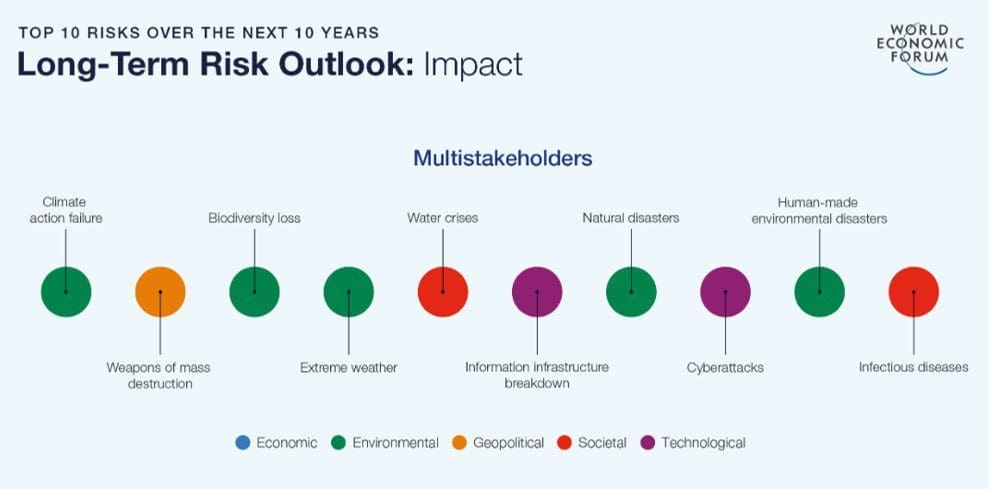The big event in Davos Switzerland is about to occur. Watching leading business executives prance around and pose is unseemly. But one good thing that comes out of this event is a Global Risks Report produced by the World Economic Forum. This report serves as a centerpiece for the themes addressed at the event.
The report includes a survey of over one thousand members of various stakeholder communities. The results reported are worth the attention of executives that participate in risk management programs at their companies.
Top Risks by Likelihood
The top 10 global risks in terms of likelihood are:
- Extreme weather
- Failure of governments to take action on climate change
- Natural disasters
- Biodiversity failure
- Human-made environmental disasters
- Data fraud or theft
- Cyberattacks
- Water crisis
- Global governance failure (with the rise of economic nationalism the ability for governments to work together to solve problems is decreasing)
- Asset bubble (which can lead to a severe global recession)
Top Risks by Impact

More important than likelihood of events occurring is their IMPACT if they do occur. The top ten risks in terms of impact are:
- Climate action change
- Weapons of mass destruction
- Biodiversity loss
- Extreme weather
- Water crisis
- Information infrastructure breakdown
- Natural disasters
- Cyberattacks
- Human-made environmental disasters
- Infectious diseases
It is a sobering list. What companies can do about these risks depends upon the type of risk. Risk mitigation can include changing where factories and other facilities are located, which ports goods and raw materials flow through, where companies choose to invest in growth, hardening IT systems, and many other things.
Companies also need to know more than just what risks have increased, they also need to know where that risk is likely to occur.
Risks can be interconnected, mitigating against one type of risk can also mitigate against similar risks. But sometimes choosing to mitigate one risk can increase a different type of risk. In short, risk trade-offs need to be considered. Finally, not all risks can or should be mitigated.
Some of the solutions to these risks need to come from governments, either individually or working together. In this case, risk mitigation involves lobbying. Lobbying by businesses is often seen as unfair favor seeking. Lobbying for solutions to these problems can only be seen as ethical.
As companies go through their annual strategic planning process, and update their risk management strategies, this report can be a good brainstorming tool.

















